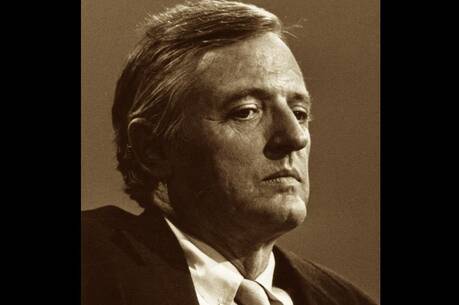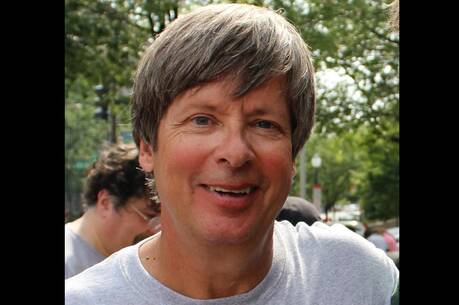Vatican II: Rupture or reform?
There are, according to political analyst and papal biographer George Weigel, two approaches to the Second Vatican Council that need correction. One approach is taken by those who think that everything began anew in the church after Vatican II, that there was nothing worthwhile in the church prior to the council, and that the council changed everything for the better. And, of course, there are others who understand the council to be a colossal mistake that compromised the church.
Both operate under the impression that Vatican II marked a rupture with tradition, and Weigel’s most recent book—To Sanctify the World: The Vital Legacy of Vatican II—is a defense of the council against this interpretation. Weigel draws attention to Pope Benedict XVI’s address to the Roman Curia in 2005, in which the pope drew a distinction between those who interpret the council as being in discontinuity with tradition and those who interpret it as reforming the church in conformity with tradition. The pope called the former the hermeneutic of rupture and the latter the hermeneutic of reform.
The governing thesis of the book is that the council can and must be interpreted through a hermeneutic of reform. To make this point, Weigel devotes Part I to the council’s historical context and Part II to an examination of the council documents themselves.
Weigel focuses on the historical context as a means of emphasizing the real purpose of the council. He looks at the cultural, social and political challenges of modernity, particularly the ways in which modernity as an ideology fostered an atomistic individualism that could not but damage humanity. Weigel examines how the 19th-century church reacted to these challenges in a primarily defensive manner that emphasized authority and law, and traces how a renaissance of philosophical, theological, biblical and historical studies within Catholicism during the 19th and into the 20th century led to an approach to modernity’s challenges that was more Christocentric and sacramental.
Weigel looks at the cultural, social and political challenges of modernity, particularly the ways in which modernity as an ideology fostered an atomistic individualism that could not but damage humanity.
Pope John XXIII called the council to build upon this foundation. Weigel argues that the goal of the council was not to accommodate the church to the world, but to articulate an understanding of Christianity that would adequately address the new and challenging context of modernity. And he posits that the council fathers undertook this task not by repudiating tradition, but by embracing the more Christ-centered, sacramental and contemplative dimensions of that tradition, particularly as articulated during the patristic and medieval periods.
After examining the historical context, Weigel goes through each of the council documents, beginning with the “Dogmatic Constitution on Divine Revelation” (“Dei Verbum”) and the “Dogmatic Constitution on the Church” (“Lumen Gentium”). In these texts in particular we find a clear articulation of God, of God’s relationship to humanity and of the church that went beyond the juridical and institutional focus that predominated prior to Vatican II and instead provided a vision that was Christ-centered and sacramental. Because these documents contain such rich theology and are tone-setting, Weigel suggests that all the other documents need to be read with reference to them.
Much of the contemporary discourse about Vatican II does not engage with the council’s documents themselves. I have met many Catholics with strong opinions about the council who have never read the documents—nor do they know much about what they actually say. Weigel helpfully directs the reader’s attention to the documents themselves, and he does a fine job of expounding on their theological profundity, elaborating on how the documents articulated a theological perspective that needed to be heard and did so in conformity with the church’s tradition. He also writes appreciatively about the language used in the council documents. Weigel notes positively that in contrast to the neo-scholastic language then dominant in ecclesiastical writings, the council fathers chose to use language and tone that was more biblical and patristic. In so doing, according to Weigel, the church was able to communicate the faith anew to a modern world.
There are certain facets of Weigel’s interpretation of the documents with which one could argue. He tends to think, for example, that the council fathers were as opposed to communism and environmentalism as he is. But there is great value both in his emphasis on turning to the sources and in the ways in which he elucidates the beautiful and important theology expressed by the council fathers.
However, the book takes an unfortunate turn in its third part, in which Weigel writes about problems that emerged after the council. Even though he begins Part III by arguing against the post hoc ergo propter hoc fallacy (in this case, “what happened after the council happened because of the council”), he ends up falling into this fallacy himself.
While Weigel argues that the neo-scholastic language and theology that dominated prior to the council was unable to address the modern human condition in ways that would be compelling to contemporary people, it becomes clear that he thinks the more biblical, patristic and pastoral language of the council caused more problems than it solved. Because the documents did not provide the kind of “precise vocabulary, finely honed distinctions, and tight logic characteristic of Neo-Scholasticism,” they were open to distortive interpretations that ran amok in the decades after the council. And because the council defined no doctrines, articulated no creed, anathematized no heresies, legislated no canons and commissioned no catechism, there were no interpretative “keys” to correct distortions after the council.
So even though he spends significant time earlier in the book exploring the theology of the council documents, Weigel appears to believe that the documents themselves are not enough because they lack the kind of theological rigor that he had criticized as being incapable of addressing modernity adequately. What is needed, he argues, are interpretive keys to rein in distortion, and he argues that Pope John Paul II and Pope Benedict XVI provided precisely those keys during their pontificates. By this he means that the council documents should be read through the lens of the teachings of these two popes because their theologies admitted no ambiguity.
It is not an exaggeration to state that Weigel writes almost as if the current pontiff did not exist.
Weigel acknowledges that Vatican II articulated a strikingly Christocentric and sacramental theological vision that drew on the riches of the church’s biblical and patristic tradition both in tone and content. In doing so, it eschewed the precise language of medieval scholasticism that had been the dominant theological language up to the beginning of the council in favor of a more pastoral and narrative tone that could speak more profoundly to modernity. The council thus developed a theology and ecclesiology that was pastoral rather than legalistic and juridical, but which still maintained continuity with the past.
Unfortunately, according to Weigel, too many Catholics after the council exploited this new tone to introduce distortions that only the reintroduction of theological rigor and discipline could correct. Thus, from Weigel’s perspective, Vatican II was good for what it was, a pastoral blip that managed to address some important issues. But it was necessary shortly after the council to return to the discipline, rigorism and legalism that reigned prior to the council. This John Paul II and Benedict XVI fortunately provided. The kind of dialogue encouraged by the council, the kind of dialogue rooted in a Christocentric and sacramental understanding of humankind, is good, but only to a degree. According to Weigel, there comes a point when it needs to be reined in.
Hence Weigel’s barely concealed antipathy for Pope Francis. It is not an exaggeration to state that Weigel writes almost as if the current pontiff did not exist. Despite whole chapters dedicated to the teachings of John Paul II and Benedict XVI, there are only two brief references to Francis, one merely to mention that Francis released Benedict XVI’s encyclical “Lumen Fidei” and one to complain that all the old questions and controversies of the council have re-emerged “during” (read “because of”) Francis’ pontificate. Weigel’s relative silence regarding the present pope speaks volumes.
For all Weigel’s praise of the council in the first two parts of the book, the third part reveals his belief that the church needs to return to an entrenched position, and on this Francis does not agree. There are, of course, many Catholics who agree with Weigel on this point, but they are generally those who dismiss or reject the council on the basis of a hermeneutic of rupture.
Although Weigel’s hope is that his readers will interpret the council through the hermeneutic of reform, ultimately he himself is not willing to buy what he is selling.
This article also appeared in print, under the headline “A Selective Hermeneutic,” in the June 2023, issue.











